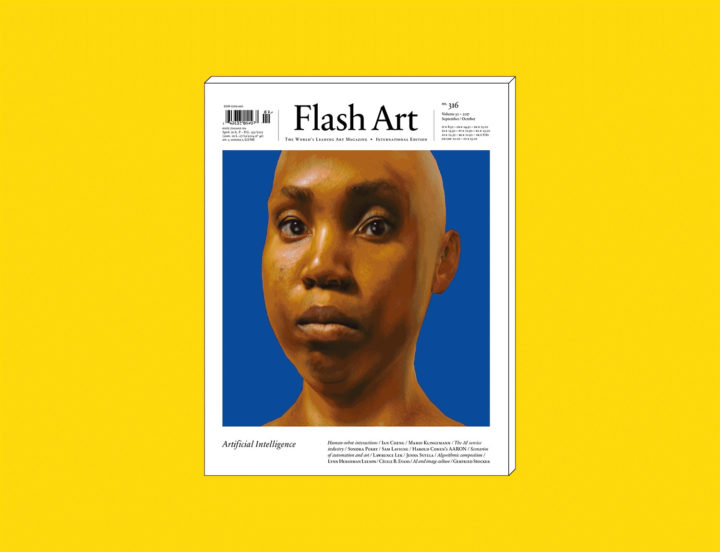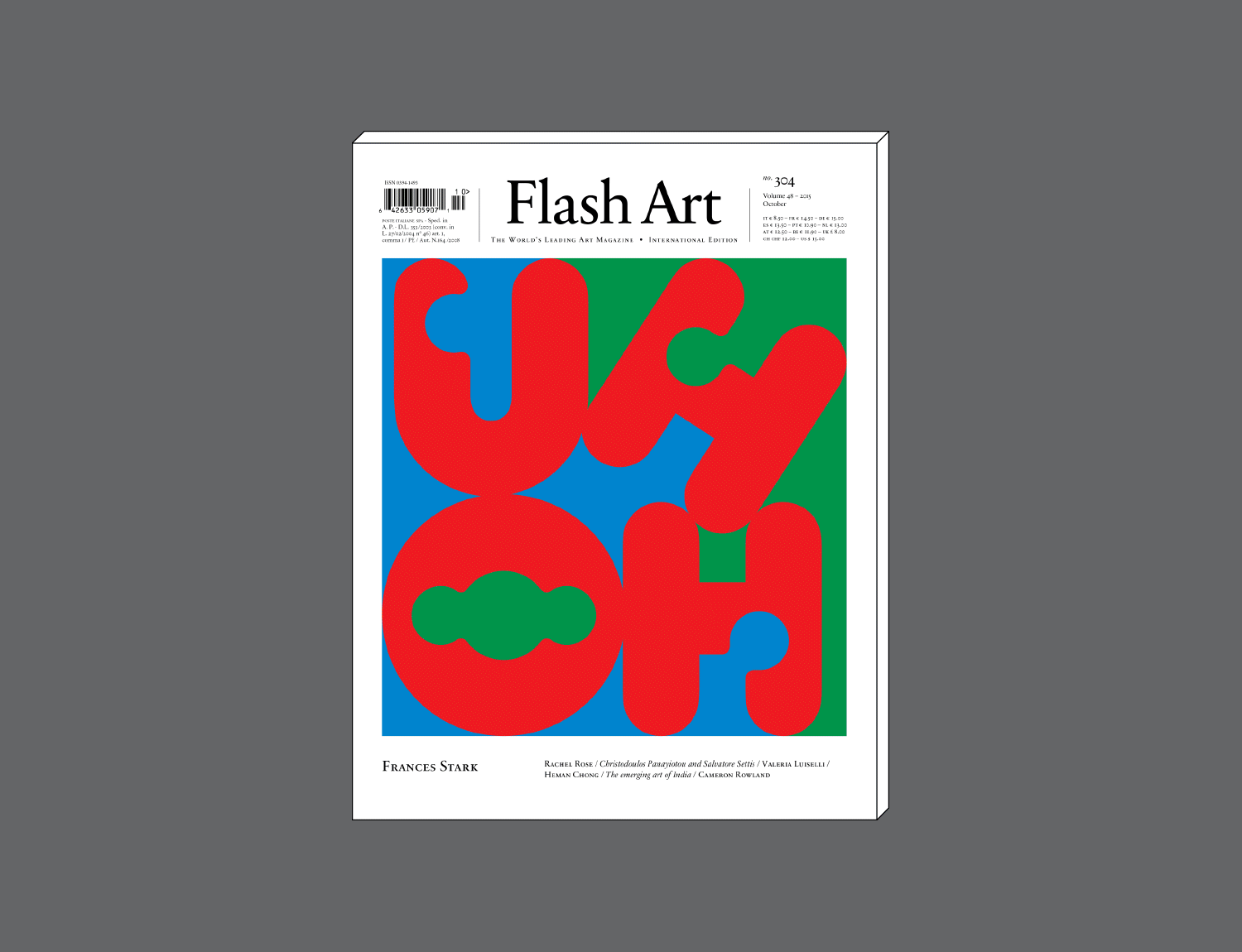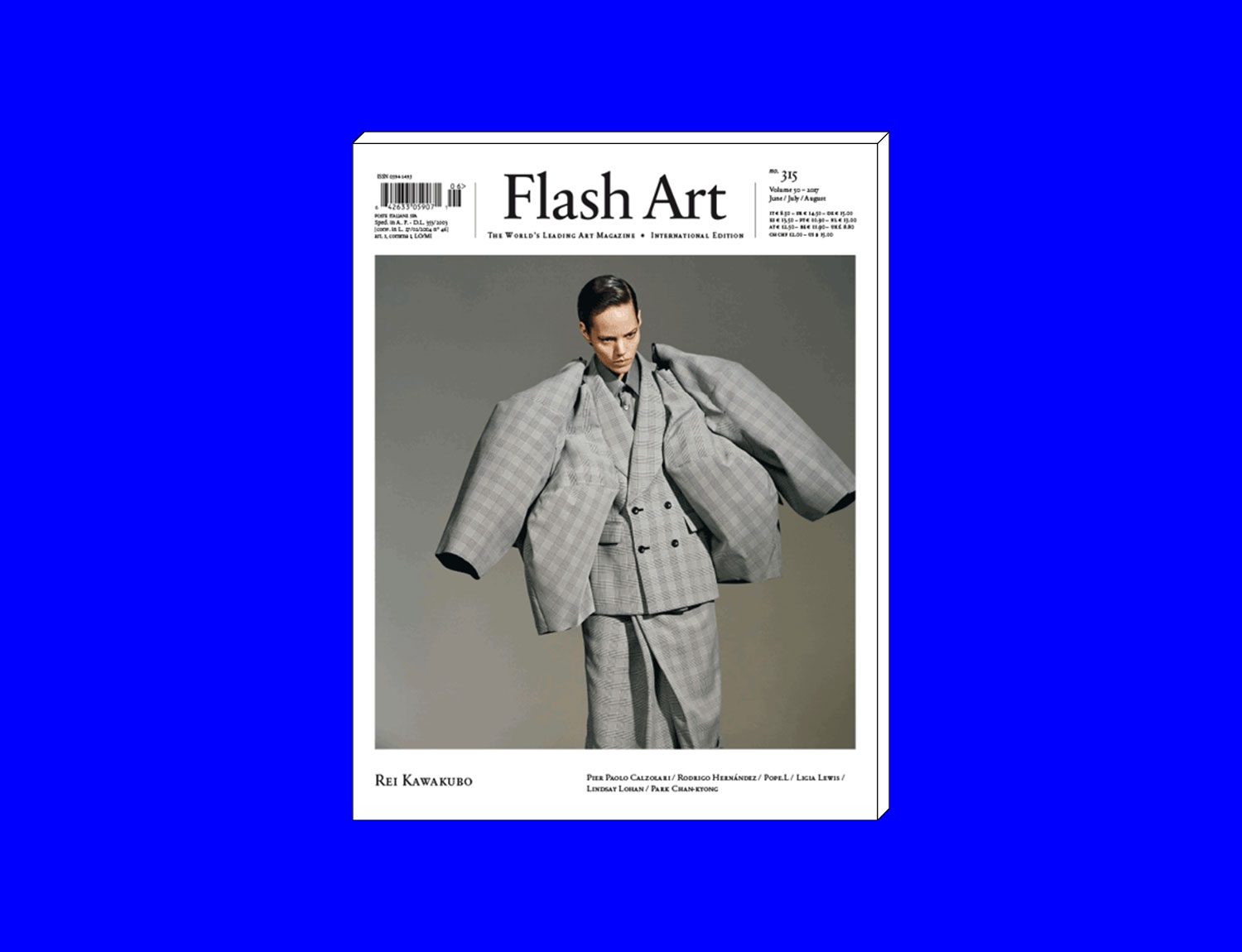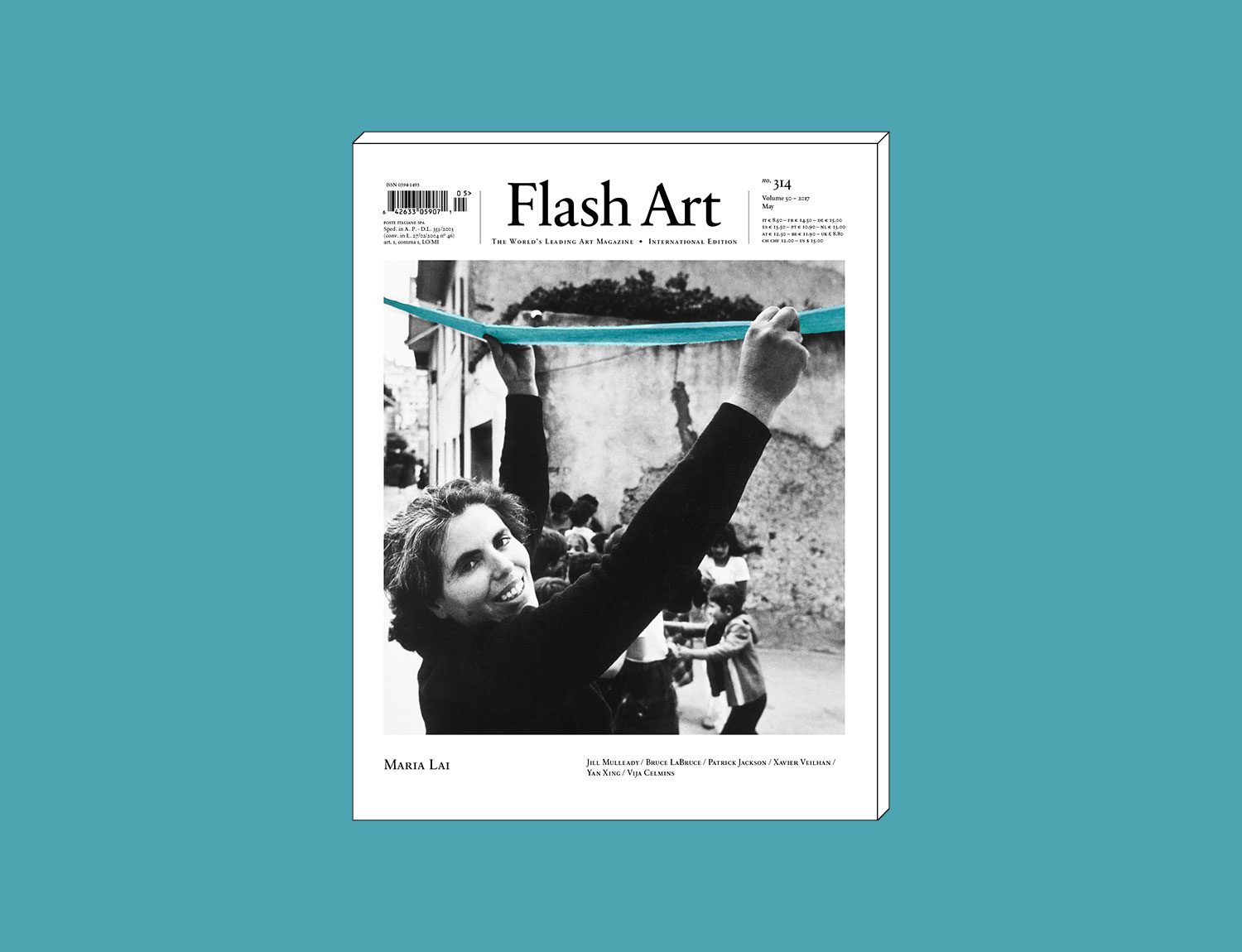We are pleased to announce that the September – October issue of Flash Art International is out now. This issue serves as a window on developments in the field of artificial intelligence. It therefore sits at the intersection of several contiguous discourses, among them contemporary art and new media studies, as well as computer and social science. Our ongoing cession of identity to nonhuman agents and intelligence demands new structures of analysis.
This edition divides its treatment of AI according to theories of utopia and dystopia, of existence and consciousness, and of gender and identity. For each of our featured artists (Ian Cheng by Sandro Weilenmann; Mario Klingemann by Luba Elliott; Sondra Perry by Nora N. Khan; Sam Lavigne; Harold Cohen’s AARON by Alex Estorick; Lawrence Lek by Anya Harrison; Jenna Sutela; Lynn Hershman Leeson by Elvia Wilk; and Cécile B. Evans by Katharina Weinstock) AI serves as a problematic –– oscillating between visibility and invisibility –– that articulates the struggle to represent our changing selves through often hybrid approaches to new technologies.
How does art reveal the cyborgian condition? How might automation reduce cultural diversity? Will AI render artists and curators jobless? And what happens when robots get tired of our oppression? Contributors to this issue — scholars, writers and researchers from the fields of data analysis, systems theory and digital culture — seek to address these and many other questions.
Edward A. Shanken triangulates the work of artists Leonel Moura and Stelarc with insights on human-robot interaction. Katherine Cross exposes the racially and gender-motivated bigotry hardwired into the nascent AI “service industry.” Eli Diner explores scenarios of automating the looking at and the making of art. Steve Kado questions whether, by fueling the AI project, we are really asking machines to change our minds. Lev Manovich sheds light on AI’s role in our cultural lives through his ongoing analysis of big cultural data and global cultural trends.
Against a backdrop in which AI’s implications are being contested by Elon Musk and Mark Zuckerberg, our final word, with Ars Electronica’s artistic director Gerfried Stocker, cautions against leaving developments in machine learning up to engineers and private companies, instead suggesting that AI be considered in relation to society as a whole.
In “Reviews”:
Louise Lawler at MoMA, New York; Sidsel Meineche Hansen at Ludlow 38, New York; “In Search of Expo 67” at the Musée d’art contemporain, Montreal; Marisa Merz at the Hammer Museum, Los Angeles; Camille Blatrix at Bad Reputation, Los Angeles; Manuel Solano at Karen Huber, Mexico City; Mathis Gasser at Chewday’s, London; Richard Serra at Museum Boijmans, Rotterdam; Win McCarthy at Silberkuppe, Berlin; Jenny Holzer at Hauser & Wirth, Zurich; Beatriz González at Peter Kilchmann, Zurich; Cerith Wyn Evans at Marian Goodman, Paris; Haroon Mirza at LiFE, Saint-Nazaire; Nick Mauss at the Serralves Museum, Porto; “TV 70” at the Fondazione Prada, Milan; “Moscow Diaries” at MMOMA, Moscow; “Canton Express” at the M+ Pavilion, Hong Kong; and Patty Chang at Bank, Shanghai.
Finally, we are pleased to announce Flash Art’s participation in the 2017 editions of Contemporary Istanbul; Art Berlin; Vienna Contemporary; Frieze London; Fiac, Paris; and Paris Internationale.





